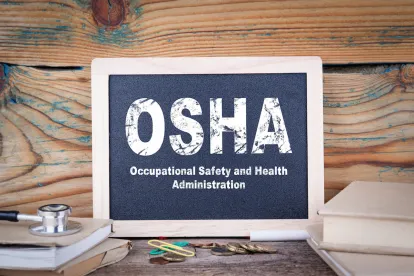Today, the Occupational Safety and Health Administration (OSHA) issued a final rule approving two additional quantitative fit testing protocols for inclusion in appendix A of the Respiratory Protection Standard. These protocols are:
-
The modified ambient aerosol condensation nuclei counter (CNC) quantitative fit testing protocol for full-facepiece and half-mask elastomeric respirators; and
-
The modified ambient aerosol CNC quantitative fit testing protocol for filtering facepiece respirators.
Both protocols are variations of the original OSHA-approved ambient aerosol CNC protocol, but have fewer test exercises, shorter exercise duration, and a more streamlined sampling sequence. The new rule becomes effective September 26, 2019.
The protocols apply to employers in general industry, shipyard employment, and the construction industry. OSHA’s goal in approving these protocols is to provide employers with additional procedures to protect the safety and health of employees who use respirators against hazardous airborne substances in their workplace.
Both protocols are abbreviated variations of the original OSHA-approved ambient aerosol CNC quantitative fit testing (QNFT) protocol (often referred to as the PortaCount® protocol), but differ from that test in respect to the exercise sets, exercise duration, and sampling sequence. These protocols will serve as alternatives to the four existing quantitative fit testing protocols listed in Appendix A of the Respiratory Protection Standard. OSHA found that these protocols “will maintain safety and health protections for workers while providing additional flexibility and reducing compliance burdens.”
The new QNFT protocols will provide employers with additional options to fit test their employees for respirator use. OSHA issued the rule with the expectation that it will increase employers’ flexibility in choosing fit testing methods for employees. The rule does not require an employer to update or replace its current fit testing method(s) if the fit testing method(s) currently in use meets existing standards.
States with OSHA-approved State Plans are not obligated to adopt the additional fit testing protocols. Nevertheless, OSHA is strongly encouraging them to adopt the final provisions to provide additional compliance options to employers in their states.
Under the Occupational Safety and Health Act of 1970, employers are responsible for providing safe and healthful workplaces for their employees.



 />i
/>i

